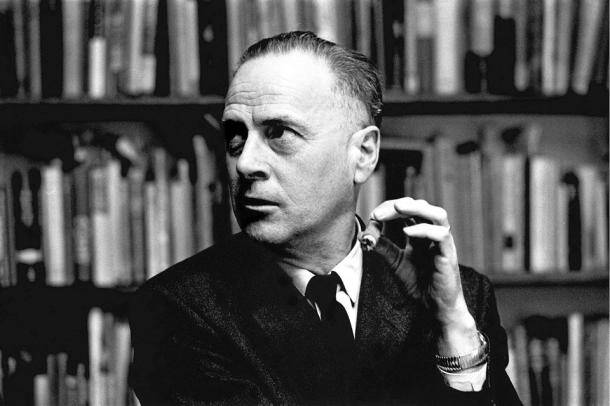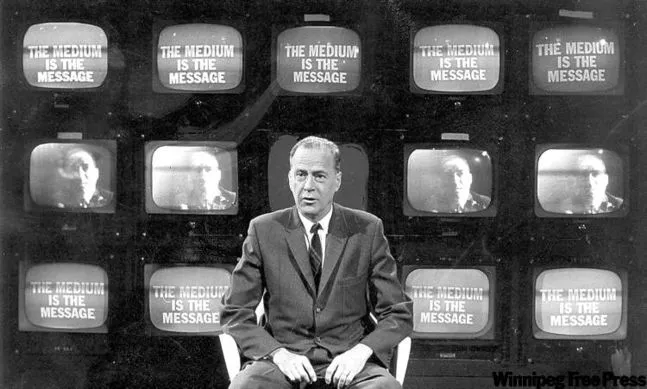The medium is the message
—–Marshall McLuhan

The definition of “Medium Theory”
Medium theory is, in fact, a theoretical framework that explores the impact of media and communication methods on society and culture. It was first introduced by Marshall McLuhan in the mid-20th century. McLuhan argued that media, beyond being tools for transmitting information, also shape people’s ways of thinking, culture, and social structures. The phrase ‘The medium is the message’ underscores the crucial role of media’s inherent characteristics in shaping the dissemination of information and influence.
Furthermore, Medium Theory highlights that the culture, social structures, and social interactions it constructs indicate the profound impact of media on the formation of cultural values, identity, and social relationships. There are also various research methods in Medium Theory, including historical analysis, text analysis, socio-cultural studies, and technological research, all aimed at understanding the role of media and how to better comprehend and utilize different media forms. Therefore, this theoretical framework has had a broad impact in both the field of communication studies and media research, aiding people in better understanding the intricacies of media’s interactions with society.
┬Ā
Examples of medium theory
- Print media: Newspapers, books, magazines. In these media, the layout of text and images influences readers’ reading experiences and the reception of information. Medium theory helps in understanding the impact of print media on knowledge dissemination and culture.
- Television: Medium theory can explain how television shapes popular culture and social interactions. Television, as a medium, not only conveys information and entertainment but also impacts the audience’s attention, emotions, and values.
- Mobile devices: Portable communication devices like smartphones and tablets are used not only for communication but also for information retrieval, entertainment, and social interaction. Their portability provides people with more opportunities for media engagement in outdoor and diverse environments.
- Radio: Radio stations attract the attention of people of different ages and varied interests through diverse music, content, or advertisements. This helps in better understanding the distinctions between media and popular culture.
- Internet: The internet, as a medium, has not only changed the speed and scope of information dissemination but also transformed how people obtain information and engage in social interactions. Social media platforms like Facebook and Twitter have profound effects on people’s social interactions and identity formation. Medium theory can help explain how the internet has altered social interactions and individual identity.
In summary, Medium Theory underscores the influence of media on society, culture, and individuals, providing a theoretical framework that aids in understanding the complex role and impact of media. This framework is widely applied in media studies, communication research, and cultural studies.
Reference
America Magazine. (2022). Review: What Marshall McLuhan can teach us in the age of digital media. [online] Available at: https://www.americamagazine.org/arts-culture/2022/12/15/review-marshall-mcluhan-ripatrazone-roden-244307.
Crane, D., 1992.┬ĀThe production of culture┬Ā(Vol. 1). Sage.
Ducros, V. (2019).┬ĀPhilosophy & Society ŌĆö The Medium is the Message by Marshall McLuhan. [online] Medium. Available at: https://medium.com/@Valentin.Ducros/philosophy-society-the-medium-is-the-message-by-marshall-mcluhan-8dd0274f156b.


This informative study dives into the substance of Marshall McLuhan’s Medium Theory and its enormous implications for comprehending the connection between media and society. McLuhan’s seminal claim that “the medium is the message” serves as the foundation of this theory, emphasising the critical role that media formats have in creating cultural values, social institutions, and individual perspectives.
The essay deftly describes the different uses of Medium Theory in print, television, mobile devices, radio, and the internet. Each case has been carefully chosen to demonstrate how different mediums not only carry material but also influence how that content is perceived and understood by audiences, influencing social interactions and cultural dynamics.
The article’s investigation of how different media types contribute to the creation of identity and social values is particularly remarkable. It offers a comprehensive perspective of how the media moves beyond their position as just information conduits to become major shapers of public debate and personal identity.
Overall, the paper is a concise yet thorough introduction to Medium Theory, skillfully integrating academic principles with real-world media events. It is a must-read for everyone interested in media studies, communication, and the effect of media on culture and society in general.
Pertinence and Insightfulness: The discussion of Medium Theory is highly relevant in our current digital age. It offers insightful perspectives on how different media forms fundamentally shape societal norms, cultural values, and individual behaviors. The emphasis on Marshall McLuhan’s pioneering work makes it particularly noteworthy, as his ideas have stood the test of time and remain applicable in the rapidly evolving media landscape.
Comprehensive Coverage: The article does an excellent job in outlining various media types ŌĆō from traditional print to modern digital platforms ŌĆō and how each uniquely impacts our lives. This comprehensive approach helps in understanding the vast scope of Medium Theory and its applicability across different media forms.
Analytical Depth: The article appears to delve deep into the theoretical aspects, providing a detailed exploration of how media is not just a mere tool for communication but a significant factor in shaping human experience and social structures. This level of analysis is valuable for anyone seeking to understand the complex dynamics of media and communication.
Educational Value: For students or enthusiasts in media studies, communication, or cultural studies, this article seems like an excellent resource. It not only educates about the fundamental principles of Medium Theory but also stimulates critical thinking about the role of various media in contemporary society.
Balanced Viewpoints: The summary seems to present a balanced view of Medium Theory, acknowledging both its historical roots and its relevance in modern times. This balance is crucial for a comprehensive understanding of the theory.
Encouragement of Critical Thinking: By highlighting the profound impact of media on our lives, the article encourages readers to critically assess their own media consumption and the broader implications of media in society. This is an essential aspect of developing media literacy in the digital age.
Potential for Further Exploration: While the article provides a solid foundation, there’s potential for further exploration into how Medium Theory applies to the latest developments in media technology, such as virtual reality, deepfakes, or algorithm-driven content curation.
In summary, the article offers a thorough and insightful exploration of Medium Theory, making it a valuable piece for those interested in understanding the intricate relationship between media forms and societal dynamics. It not only educates but also encourages a more nuanced and critical perspective towards media consumption and its broader social implications.
In this article, you give a brief introduction to Marshall McLuhan and his pioneering ideas, which developed a unique theory of media and successfully anticipated the problems of communication more than 30 years before the Internet was born. McLuhan believes that media is the basic driving force of social development, and these theories have had an important impact on people’s understanding of media. The emergence of each medium has created a way for human beings to perceive and understand the world, changed the relationship between people, and created new types of social behavior. Five examples of media theory are given for readers to understand. If you can add some of your own understanding and views on media theory, I think this article can be better.
Great blog post it was informative short to the point but effective. The examples of different medium theories were very well presented and it was an interesting blog as a whole. To add to the blog you could’ve showed the difference between the medium theories throughout the centuries I think it could’ve been an interesting concept to explore.